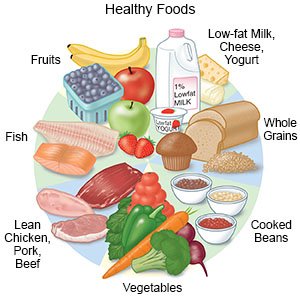Lead Poisoning in Adults
Medically reviewed by Drugs.com. Last updated on Aug 4, 2025.
What is lead poisoning?
Lead poisoning is dangerous levels of lead in your blood. Poisoning usually happens when items that contain lead are accidentally inhaled or swallowed. Lead is found in paint, batteries, and gasoline fumes. Lead is easily absorbed and can cause nervous system damage. Lead also replaces calcium in bones.
What increases my risk for lead poisoning?
- Ingestion of lead-based paint from items such as toys and furniture
- Pica (eating items that are not food)
- Not enough iron, calcium, or zinc in your blood
- A hobby that uses lead, such as pottery, stained glass making, and iron crafts
- Living in an old house or building with lead-based paint and lead pipes
- Working with or near lead, such as in a mine, sewer, or printing press
What are the signs and symptoms of lead poisoning?
- Abdominal pain, tenderness, or cramps, vomiting, or constipation
- Headaches or joint pain
- Trouble thinking, concentrating, or making decisions
- Feeling tired and weak (fatigue) or irritable
- Loss of appetite and weight loss, or a metal taste in your mouth
- Pale skin, fatigue, muscle weakness, tremors, or paralysis
- Personality changes, mood swings, and trouble sleeping
- Seizures or a coma
How is lead poisoning diagnosed?
- Blood tests may be used to check for lead or signs of lead poisoning, such as anemia (low red blood cells). Blood tests may also show signs of kidney damage.
- X-rays may show where the lead is, if it was swallowed.
How is lead poisoning treated?
- Iron may be given to treat anemia. Your healthcare provider will tell you how much you should take.
- Vitamins and minerals may be needed. Calcium, phosphorus, and vitamin C can help decrease blood levels of lead. Your healthcare provider will tell you how much you should take of each.
- Chelation therapy is medicine that will bind with lead in the blood. The lead will be removed through your urine and bowel movements. You may need to drink more liquids than usual. Ask how much liquid to drink each day and which liquids are best for you.
- Medicines may be given for pain or to prevent or control brain swelling or seizures.
What can I do to care for myself?
- Rest as needed. Start to do more each day.
- Drink more liquids. This may help your kidneys get rid of the lead. Ask how much liquid to drink each day and which liquids are best for you.
- Eat healthy foods. Healthy foods include fruits, vegetables, whole-grain breads, low-fat dairy products, beans, lean meats, and fish. These may help you feel better and have more energy. Ask if you need to be on a special diet.

Where can I find more information?
- National Lead Information Center
422 South Clinton Avenue
Rochester , NY 14620
Phone: 1- 800 - 424
Web Address: http://www.epa.gov/opptintr/lead
Call your local emergency number (911 in the US) or have someone call if:
- You have a seizure.
When should I seek immediate care?
- You have been sleeping more, or have more difficulty than normal waking up.
When should I call my doctor?
- You have a fever.
- Your symptoms get worse, or do not go away.
- You have questions or concerns about your condition or care.
Care Agreement
You have the right to help plan your care. Learn about your health condition and how it may be treated. Discuss treatment options with your healthcare providers to decide what care you want to receive. You always have the right to refuse treatment. The above information is an educational aid only. It is not intended as medical advice for individual conditions or treatments. Talk to your doctor, nurse or pharmacist before following any medical regimen to see if it is safe and effective for you.© Copyright Merative 2025 Information is for End User's use only and may not be sold, redistributed or otherwise used for commercial purposes.
Learn more about Lead Poisoning
Treatment options
Symptoms and treatments
Further information
Always consult your healthcare provider to ensure the information displayed on this page applies to your personal circumstances.
